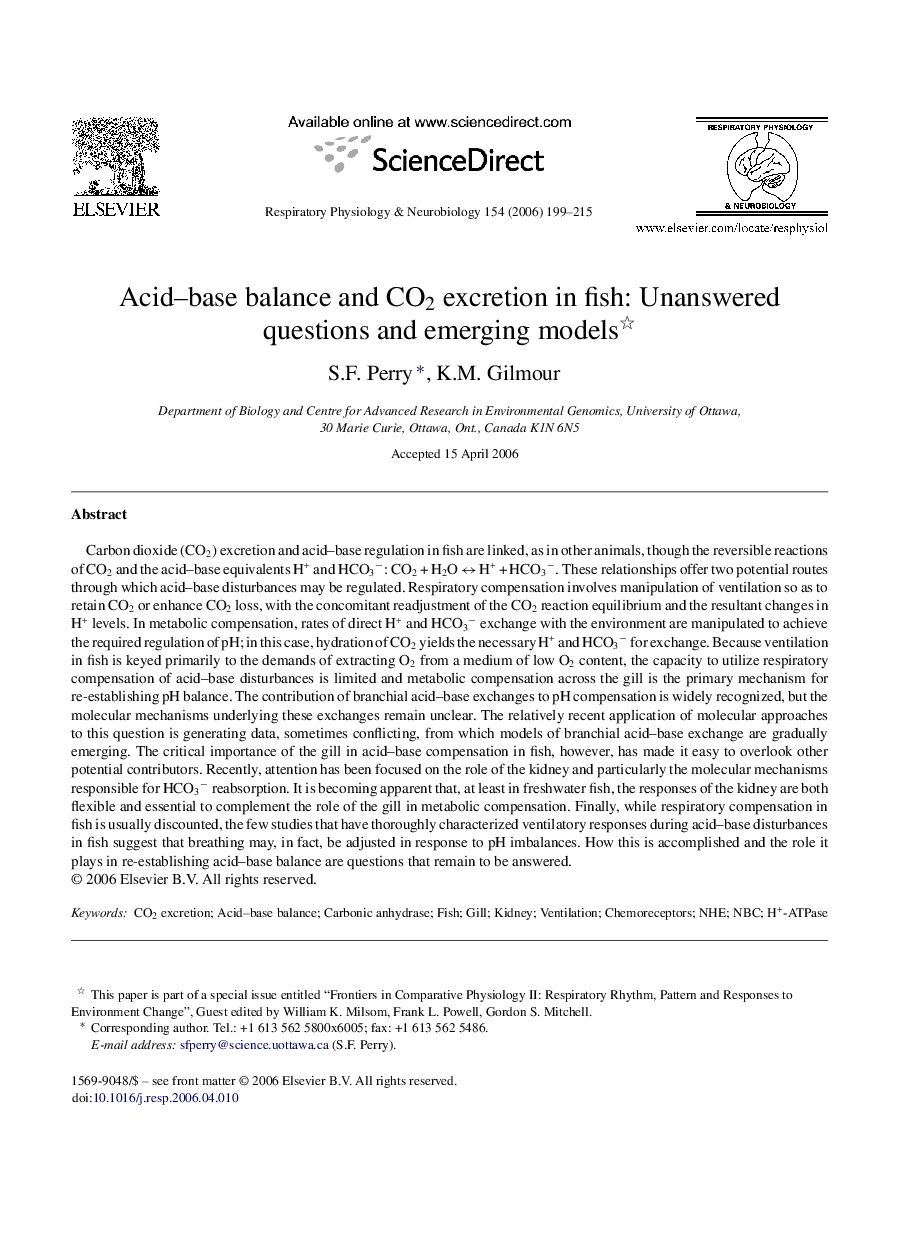| کد مقاله | کد نشریه | سال انتشار | مقاله انگلیسی | نسخه تمام متن |
|---|---|---|---|---|
| 2848641 | 1571353 | 2006 | 17 صفحه PDF | دانلود رایگان |

Carbon dioxide (CO2) excretion and acid–base regulation in fish are linked, as in other animals, though the reversible reactions of CO2 and the acid–base equivalents H+ and HCO3−: CO2 + H2O ↔ H+ + HCO3−. These relationships offer two potential routes through which acid–base disturbances may be regulated. Respiratory compensation involves manipulation of ventilation so as to retain CO2 or enhance CO2 loss, with the concomitant readjustment of the CO2 reaction equilibrium and the resultant changes in H+ levels. In metabolic compensation, rates of direct H+ and HCO3− exchange with the environment are manipulated to achieve the required regulation of pH; in this case, hydration of CO2 yields the necessary H+ and HCO3− for exchange. Because ventilation in fish is keyed primarily to the demands of extracting O2 from a medium of low O2 content, the capacity to utilize respiratory compensation of acid–base disturbances is limited and metabolic compensation across the gill is the primary mechanism for re-establishing pH balance. The contribution of branchial acid–base exchanges to pH compensation is widely recognized, but the molecular mechanisms underlying these exchanges remain unclear. The relatively recent application of molecular approaches to this question is generating data, sometimes conflicting, from which models of branchial acid–base exchange are gradually emerging. The critical importance of the gill in acid–base compensation in fish, however, has made it easy to overlook other potential contributors. Recently, attention has been focused on the role of the kidney and particularly the molecular mechanisms responsible for HCO3− reabsorption. It is becoming apparent that, at least in freshwater fish, the responses of the kidney are both flexible and essential to complement the role of the gill in metabolic compensation. Finally, while respiratory compensation in fish is usually discounted, the few studies that have thoroughly characterized ventilatory responses during acid–base disturbances in fish suggest that breathing may, in fact, be adjusted in response to pH imbalances. How this is accomplished and the role it plays in re-establishing acid–base balance are questions that remain to be answered.
Journal: Respiratory Physiology & Neurobiology - Volume 154, Issues 1–2, November 2006, Pages 199–215